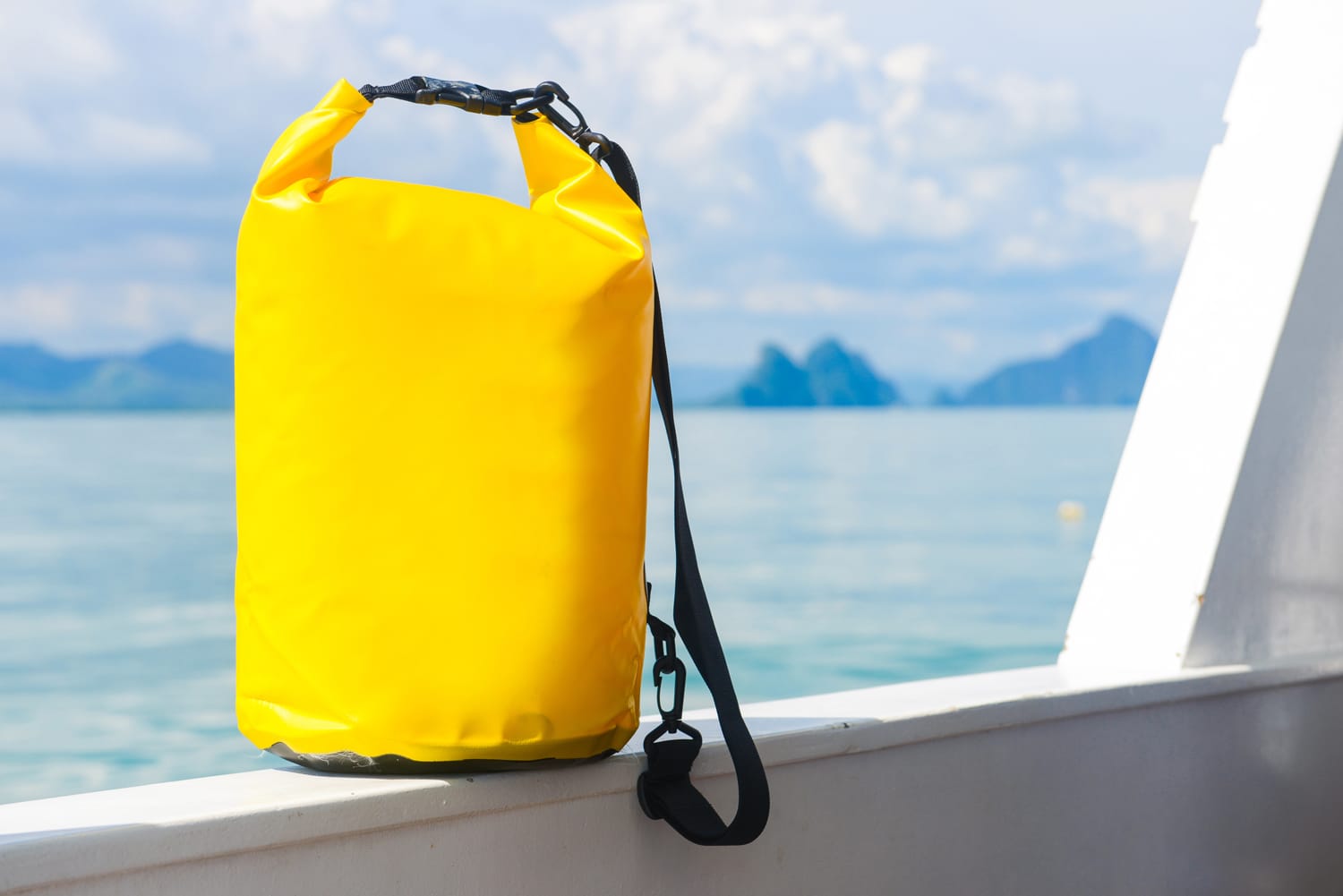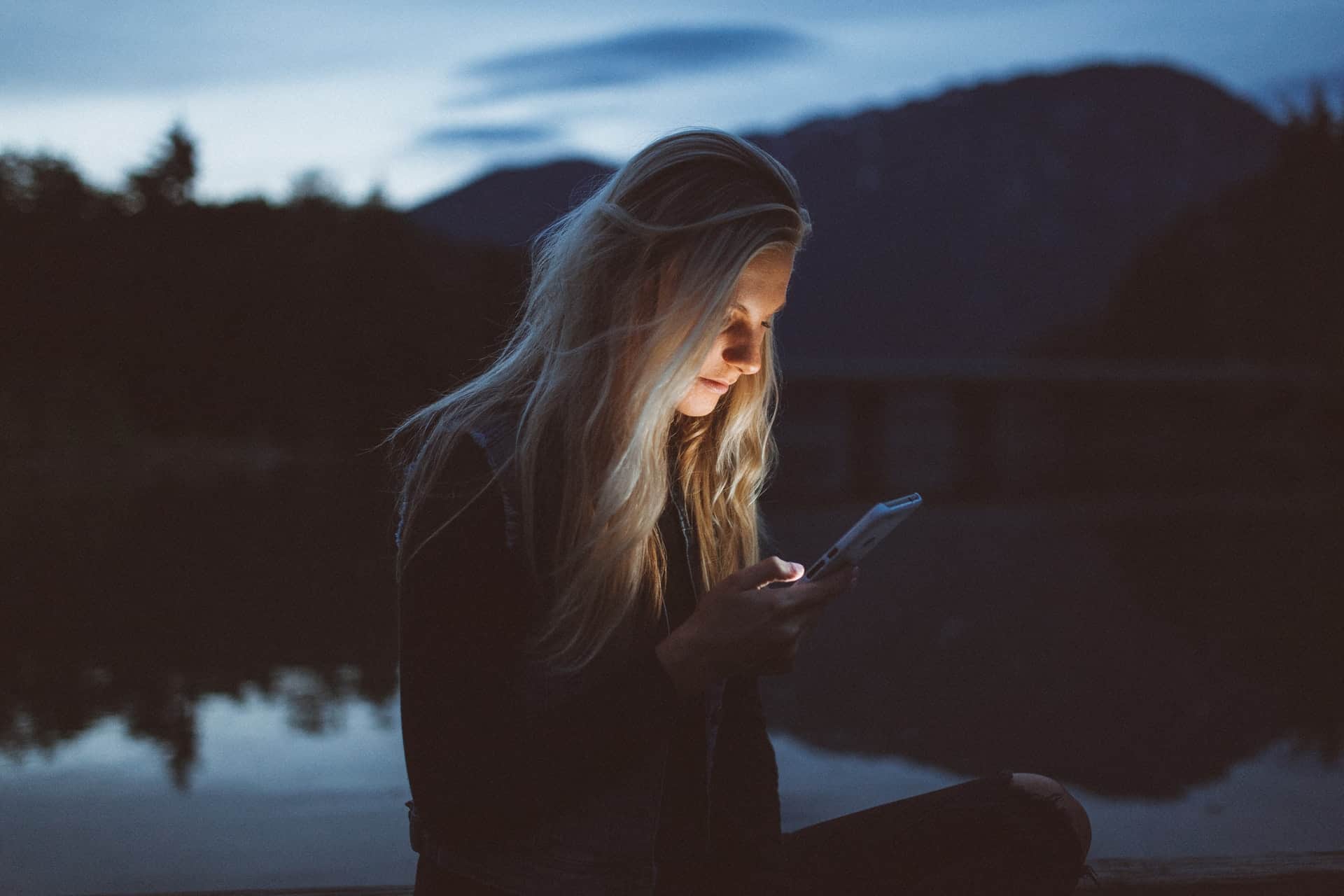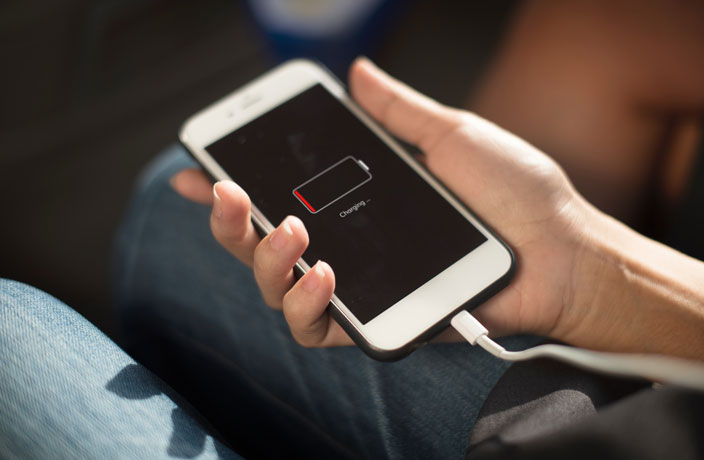If you’re an avid hiker, you probably have struggled with keeping your cellphone safe on the trail at some point. Personally, I cracked my phone screen after I set it down while bouldering.
There’s a good chance you have a similar story, whether you dropped it on a hike, slipped and fell, or any other manner of accidents. Perhaps you’re just worried about potentially damaging your phone in the future.
Either way, there are many options to keep your phone safe when you’re outdoors, and I’ll be helping you find the best way for your adventures!
If you’re hiking, the best way to carry your phone is in a secure pocket, with a case. A dry bag or water-protective, resistant bag or pocket is also ideal depending on the condition. Whether you have pants, jacket, or bag pocket, or anything else, as long as it securely zips or buttons your phone will generally be safe.
A protective case is also ideal in case you potentially do drop or damage it. While your phone may not be perfectly protected if you carry it in your hand, a case will still be helpful in any potential instances that will damage it.

A good deal of how you carry your phone when hiking will rely on what you are wearing and carrying, and if you have it in your hand, but I’ll go over some examples of good ways to carry or protect it, and how to keep your phone safe if you do have it outside of a pocket or bag.
Disclosure: Hikers Needs is reader-supported. Buying through links on our site may earn us an affiliate commission.
How can I use my phone when hiking?
Most outdoor activities will have a massive amount of resources available for you to access online. As a climber, I use my phone for navigation, photography or videography, and access to online resources like Mountain Project.
There are also several app options available for hiking and other outdoor recreation. Your phone can even be a compass. Generally one of the easiest options is to take pictures of paper maps, but there are many navigational apps.
A few relevant hiking apps are listed below:
- AllTrails
- Gaia GPS
- Hiking Project
- PeakVisor
- Spyglass
- National Park Service App
- Cairn (A safety app)
- Google Maps
- Guthook Guides
- Recreation.gov
- iNaturalist (You can take photos to identify plants and wildlife)
Naturally, you’ll have to research different apps and resources to discover which one will work best for your treks and adventures. I only listed some of the more well-known apps, but there are a great number of tools that your phone will offer for outdoor sports and recreation.
Some of these apps can still be used without cell signals or Wi-Fi. Depending on your hike or trip, you may need to make sure the app you are using offers off-grid usage. Even if your favorite phone resources have offline capabilities, you should still carry physical maps and navigation tools.
Being prepared for challenging situations is imperative for sports that put you in remote or dangerous situations, including hiking.
If you’re on a short trek on a well-kept trail you likely won’t need any of these resources, but more serious journeys require you to understand potential hazards you may face. Your phone can easily malfunction, and you should plan for it to do so.
How To Carry A Cellphone While Hiking?
If just bringing your phone along on a hike and you don’t need it on hand, placing it in a safe area of a backpack is ideal. A small zipper pocket that is slightly cushioned is the best area for your phone, ideally, aim for a waterproof pocket.
If you do not have a water-resistant pack and you expect wet conditions, a dry bag is a must. Companies typically construct them for water-based outdoor sports like kayaking, so a little rain or moisture is no problem.

Many dry bags are relatively inexpensive, and if you hike or enjoy outdoor sports, they are a must-have item. In a pinch, zip-lock baggies are also a great way to keep your phone dry. If in a sandy area, I would also recommend a jack plug to prevent any from entering the charging port.
If my phone is in a pocket that it would be somewhat loose and bounce around in, I also wrap it in a bandana on occasion.
The important thing is placing it somewhere you will reduce bouncing or hard impacts if you set your bag down. It’s easy to forget to be careful with a backpack, especially if you’re tired after a tough hike!
If you crack your phone, keeping the electric tape in your bag can also offer a quick fix for potential holes or bad cracks in the screen.
Another option is to place your phone in pants or a jacket pocket. Many hiking pants offer pockets with zippers or fasteners that will make sure your phone does not fall.

A typical front pocket will also be there on many styles of men’s pants, just remember that type of pocket may not be deep, so your phone can easily slide out if you lift your leg high enough, crouch, climb, and so on.
Many hiking leggings also offer a secure pocket. These are all great options if you prefer to keep your phone more readily available to take pictures, navigate, or for any other potential needs on the trail.
Just keep in mind, your phone will be more susceptible to water damage, or potential harm in a fall or slip.
Jackets with secure pockets are a great option, and they may offer greater protection against water in poor conditions. An inner breast pocket will normally be your best bet for protection in a jacket.
Hiking Phone Holders
As mentioned earlier, while hiking, there are many reasons why you may wish to have your phone at hand at all times.
When it is zipped up in your pants or backpack pocket, getting it out in an emergency will waste so much of your time. Since you don’t want that, but you cannot afford to carry it in your hand all the time.
Due to two reasons: First, your hand will become tired, and second, you will increase the risk of damaging your phone if it slips out of your grasp. But don’t worry, there is a perfect solution to this problem… a hiking phone holder.
A phone holder helps to keep your hands free while you're hiking, so you can concentrate on the trail and watch for hazards. It also allows you to easily access your phone in case of an emergency.
If you're hiking in a remote area, a phone holder can also be a lifesaver. By keeping your phone close at hand, you'll always be able to call for help if something goes wrong.
In addition, a phone holder can help to keep your device safe and secure while you're on the move. So a huge relief, if you don’t have AppleCare!
Phone holders come in a variety of styles, so you can choose one that best suits your needs.
From a simple strap that just securely holds the phone in place to a more advanced case with a built-in charger, there are plenty of options in the market.
Most hiking phone holders are designed to attach to your belt, wrist, or arm, keeping your hands free while still providing easy access to your phone. Some even come with a chain strap attached to a sturdy phone case that you can wear around your neck.
Here are a few things to look for while picking a phone holder for your next hiking adventure:
- Adjustable Strap Length
- Water and Sweat Resistance
- Easy Removal and Attachment
- Fits Your Phone's Screen Size
- Screen Protection
- Extra Slots For Cards
- Anti-Tangle Cord Organizer… For Headphones
- Ruggedness and Impact Resistance Of The Phone Case
Recommendations
One of our favorites is this Migeec Phone Holder with its amazing features such as, a highly-sensitive waterproof screen that is responsive to even sweaty fingers, ultra-bright reflective strip that provide high visibility even under bright sun, and super comfortable adjustable armband.
Next up our list of favorites is JOTO Universal Waterproof Phone Pouch for two reasons; 100% waterproof so can be used in rain, snow, and underwater and comes with a neck strap for convenient carrying.
If you are an avid hiker who loves to explore the great outdoors frequently, then a hiking phone holder is an essential. Most of these holders are often pocket-friendly, but you should always keep in mind that a higher price tag might get you better features.
General rule of thumb while buying any hiking gear is to prioritize value for money over the price of the product!
Are there any other alternative?
Yes, there are plenty of alternative methods! Many companies offer pouches that you can secure to your belt, backpack, or other areas you may want to try.
If you don’t love the idea of a pouch, runner-style hip belts or arm and leg bands are a great choice too!.
Many stand by the fanny pack for carrying gear if they don’t want to carry a backpack. All of these are great choices, research which one fits your needs best. Look for an option you find comfortable and useful because that’s all that matters when hiking.
These choices may not offer as much protection as a pack, but they give you slightly more security and cover from the elements as opposed to many clothing pockets.
There is also plenty of cellphone lanyards or outdoor straps to keep your phone on you. Some of these may be a phone with a lanyard attached, but choices vary. If you like to have your phone more immediately available, lanyards are a great choice.
What if I don’t like these options?
If you’re still skeptical about carrying your phone on adventures, you may be interested in a hiking smartwatch. While features vary based on company and model, they will generally have navigational and exercise style tools to help you along with your adventures.
With tools like altimeters, barometers, compasses, GPS, thermometers, heart rate monitors, and more, these watches will likely offer more hiking-specific uses than your phone.
Prices are generally steep, but if you’re on hardcore adventures and scared of breaking your phone, this may be a good choice to research.
While I can’t tell you which hiking smartwatch would be the best option to look into, I can recommend a few brands.
- Garmin
- Suunto
- POLAR
- Casio
- Coros
These are the most reputable and well-regarded brands offering smartwatches designed for hardcore conditions. You may notice many of them are some popular watch and GPS brands. These companies specifically constructed products that are meant to hold up to all the rigors you may face when hiking, or during outdoor sports
Garmin even offers multiple military-specific options. Hiking smartwatches are amazing products with a vast array of applications and features, but they have a hefty price tag, and if you aren’t in tough conditions away from civilization, they may not be necessary for you.

If you can’t bring yourself to take your phone hiking, or you have a track record of breaking cellphones, they may be the best option for you.
Tips for carrying your phone in your hand when hiking
If none of these options appeal to you, or you want or need to carry your phone in your hand when hiking, I’m gonna offer some tips to prevent potentially damaging it.
- Use a waterproof case and/or screen protector (LifeProof cases are a great example)
- Keep an eye on the terrain you are traveling on, a trip or fall may result in your phone being damaged
- Ideally, keep away from drop-offs or cliffside edges if you are prone to dropping your phone
- Obviously, be mindful of weather conditions
How To Keep Your Phone Charged While Hiking

If you frequently use a phone when hiking, battery life may be a concern. Putting your phone in low power mode or airplane mode both offer prolonged usage outdoors.
Depending on your use of the phone, this may be a challenging option. Other methods to research include mobile battery packs and cell phone solar chargers.
Battery packs are a more accessible option for everyone, and if you maintain the charge on them they will be a wonderful resource on trips. Mobile solar panels are a better option for prolonged backpacking or outdoor trips where you may not have access to electricity often.
Conclusion
Overall, there’s a great number of ways to carry your phone when hiking. If you’re mindful of the weather, your surroundings, and you stay prepared, your phone will stay safe when you bring it on your next adventure.
If you research options that fit your needs and make sure you keep your cellphone protected, you’ll have no problems. It can be daunting to take a fragile phone outdoors, but preparedness goes a long way.
A good case is, in my opinion, a necessity for taking your phone on anything more than a casual hike. With so many apps and resources available on phones today, they offer an amazing resource for outdoor enthusiasts.
You should use your phone outdoors, whether that’s for taking photos, using maps, or accessing information about your area or relevant information, smartphones are too amazing a resource to ignore.
Don’t count on technology as your only resource, but as long as you plan well and keep it protected, you’ll have no problems using your phone to improve your outdoor experiences.
For more detailed guides and references, read my other posts:
About the Author

Hussain is a passionate hiker and traveler that love the outdoor and enjoys what nature has to give, whenever he can he love to write and give tips & honest reviews to help others get out there and just seek more unforgettable experiences.
